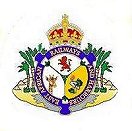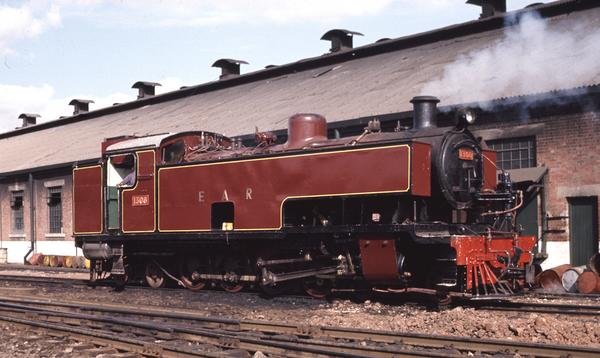|
|
East African Railways and Harbours East African Railways Corporation |
|
| By 1969 EAR&H became the East African Railways Corporation and the railways and harbours became separate administrative entities. | ||
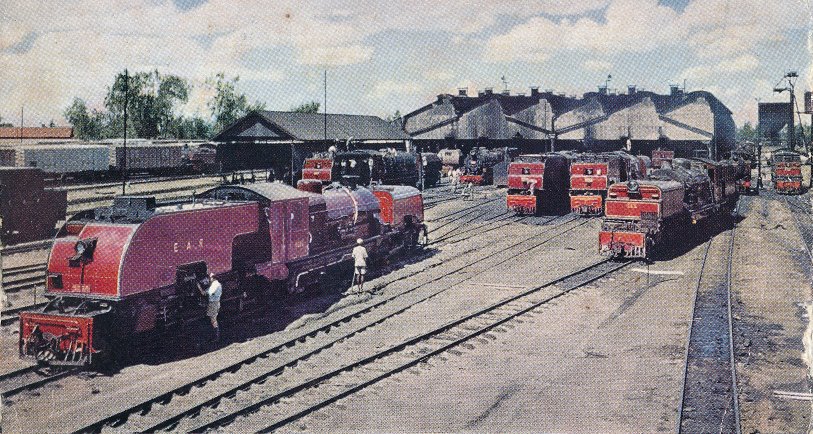 |
||
| Line-up of East African Railways motive power at Nairobi MPD with 60 Class Garratt 6024 Sir James Hayes Saddler prominent left and 57/58 Class right. Five 59 Class Garratts, two 29 (Tribal) Class and two tank engines are also quite clearly discernable. The post card was probably produced around 1955-6 - EAR&H Postcard via Cliff Rossenrode | ||
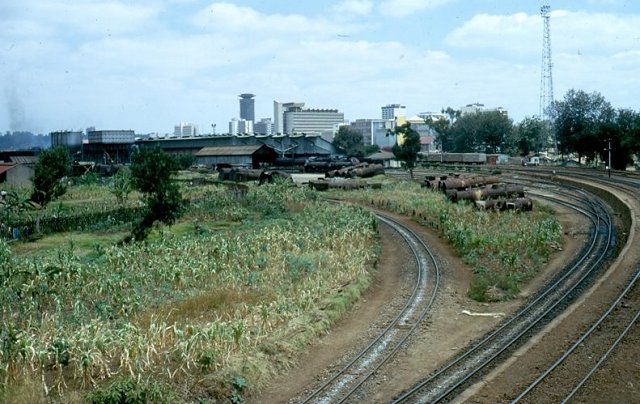 |
||
| The approaches to Nairobi from Mombasa. The raised tracks were a favourite photo location where many an EAR&H locomotive posed for a publicity photograph. But by the mid seventies it was a dismal sight for the steam enthusiast with over a dozen boilers from once mighty maroon giants littering the approaches to the steam shed. A new diesel depot had been built at Makadara. The narrow metre gauge track is very evident. The loading gauge however was in excess of British Railways standard gauge. - PHOTO Anthony Potterton | ||
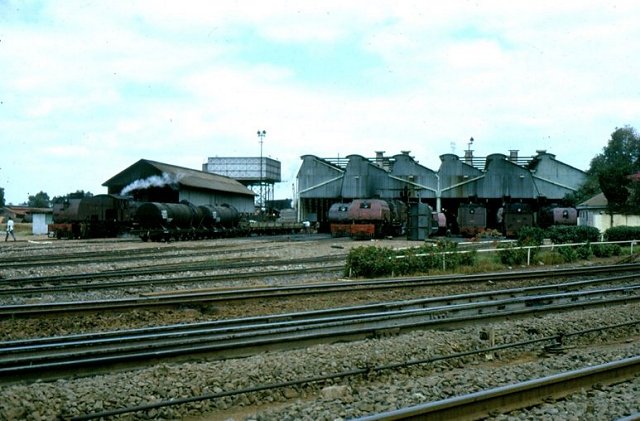 |
||
| Nairobi Shed from the Mombasa line - left to right are 60 Class, two 59 Class, a 31 Class, a 59 Class and another 60 Class - PHOTO Anthony Potterton | ||
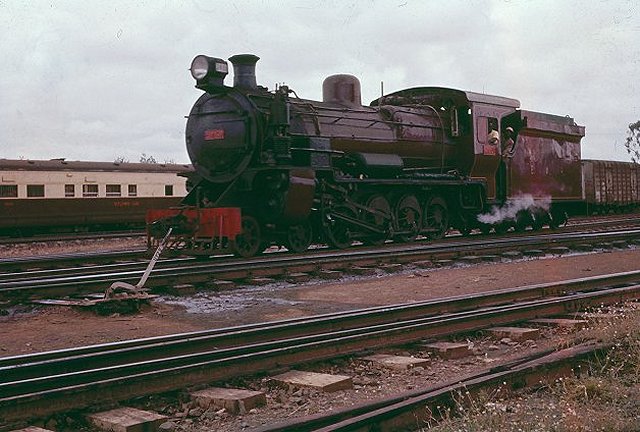 |
||
| 2402 in Nairobi Yard. In the background is one of the diners used on the overnight Nairobi-Mombasa service - PHOTO Geoff Pollard | ||
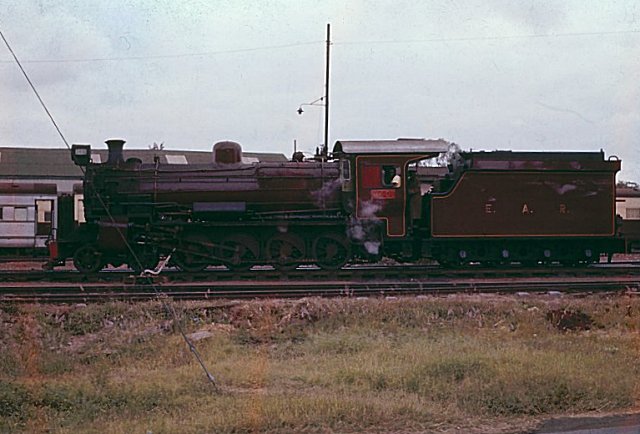 |
||
| 2402 with one of the unpainted aluminium first class passenger coaches just visible. When the Queen Mother visited Kenya in 1958 the Royal Train was made up of all-cream stock necessitating the painting of some of the aluminium coaches; eventually all of these coaches ended up in the standard EAR dark maroon and cream which had always been used on the second and third class stock - PHOTO Geoff Pollard | ||
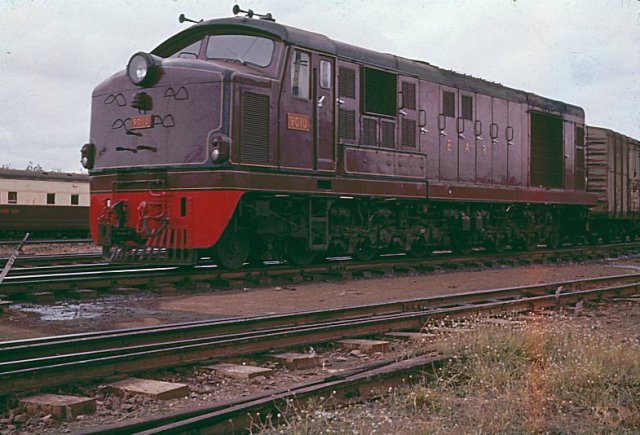 |
||
| 9010 with a maroon and cream kitchen car in the background (see above) - PHOTO Geoff Pollard | ||
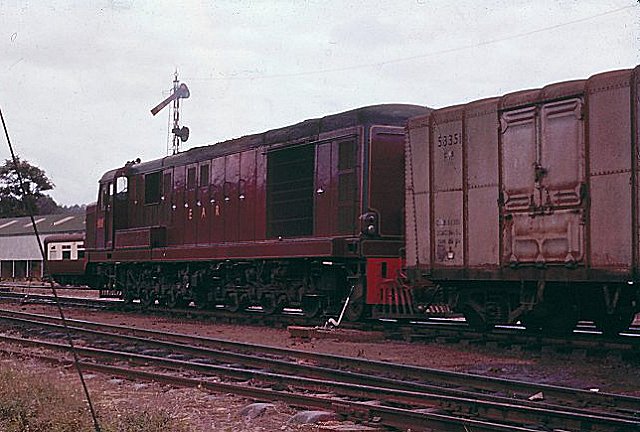 |
||
| The same 90 Class gets the right away. A second class coach is ahead of the engine - PHOTO Geoff Pollard | ||
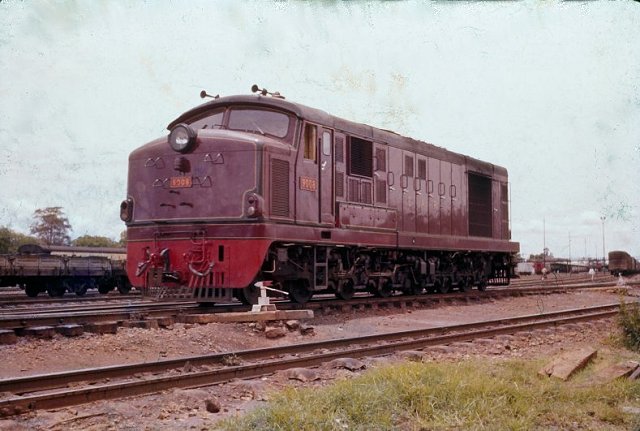 |
||
| 9008 at Nairobi - PHOTO Geoff Pollard | ||
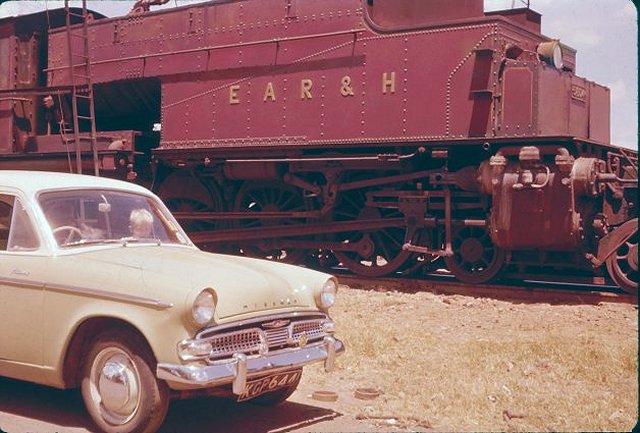 |
||
| Unique 58 Class, 5804. It was the one of the few locomotive to bear the letters EAR&H on the tenders - PHOTO Geoff Pollard | ||
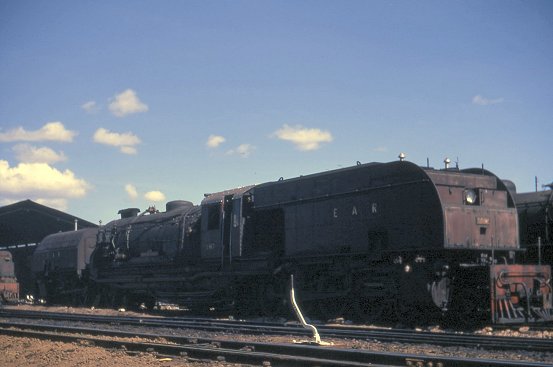 |
||
| Unidentified 59 Class at Nairobi - PHOTO Kevin Patience | ||
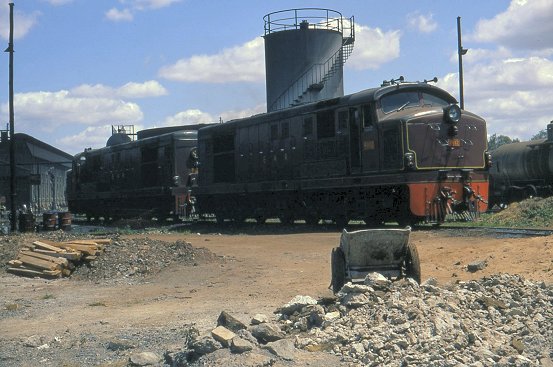 |
||
| 90 Class 1-Co-Co-1 diesels introduced in 1960 seen here at Nairobi Shed. The first diesels to operate on the main line they were originally rostered to run between Nairobi and Nakuru. - PHOTO Kevin Patience | ||
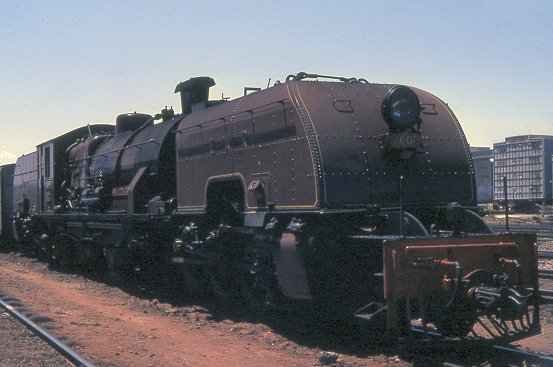 |
||
| 60 Class 6008 Sir Wilfred Jackson with Giesel ejector at Nairobi. Most classes were refitted with Giesel ejectors which, although improving efficiency, arguably detracted from the appearance of the locomotive - PHOTO Kevin Patience | ||
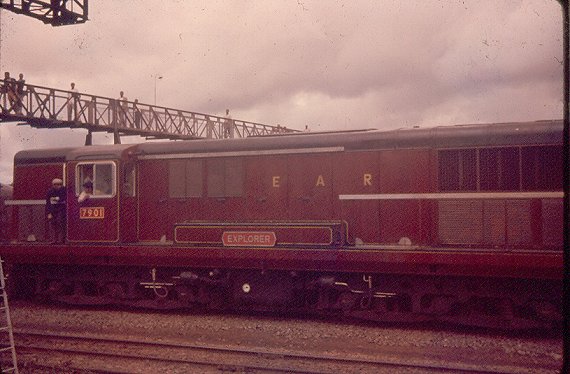 |
||
| Unique pioneer diesel 79 Class 7901Explorer at Nairobi - PHOTO Iain Mulligan | ||
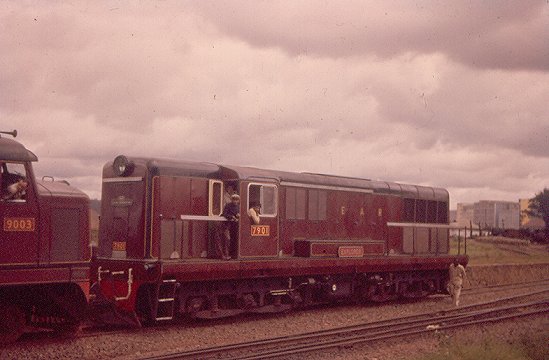 |
||
| Explorer at the purpose built diesel depot at Makadara on 31 July 1962 - PHOTO Iain Mulligan | ||
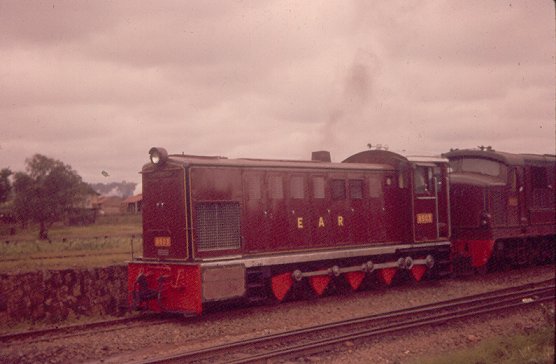 |
||
| Class 85 8503 working dead Class 90 diesel electrics to Makadara MPD. PHOTO Iain Mulligan | ||
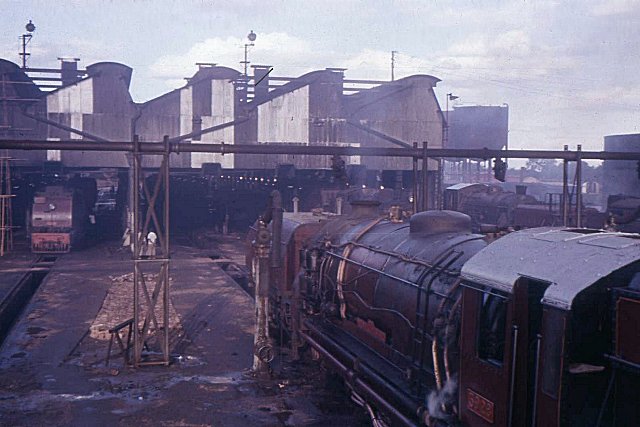 |
||
| October, 1962. 59 Class 5928 Mount Kilimanjaro with an unidentified members of the 60 Class, left, and the 58 Class, right. - PHOTO Malcolm McCrow | ||
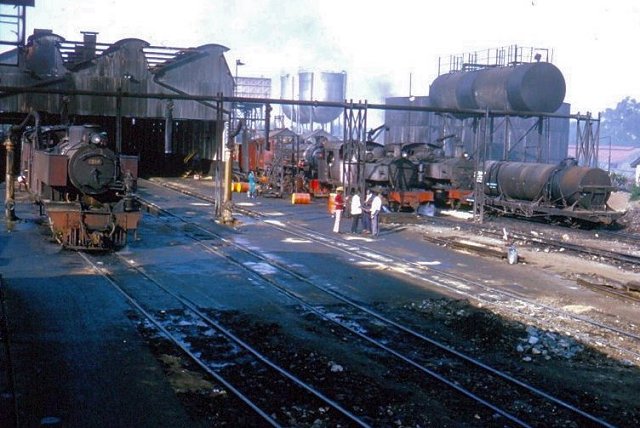 |
||
| 1975. Nairobi Shed in the lengthening shadows of the rapidly setting sun. A 13 Class 4-8-4T with a 31 Class and two 11 Class tank engines in the background - PHOTO Anthony Potterton | ||
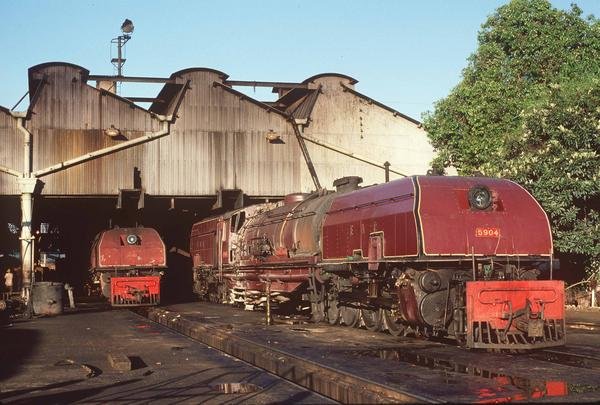 |
||
|
5904 Mount Elgon with 5912 Mount Oldeani still in the shed. PHOTO - James Waite |
||
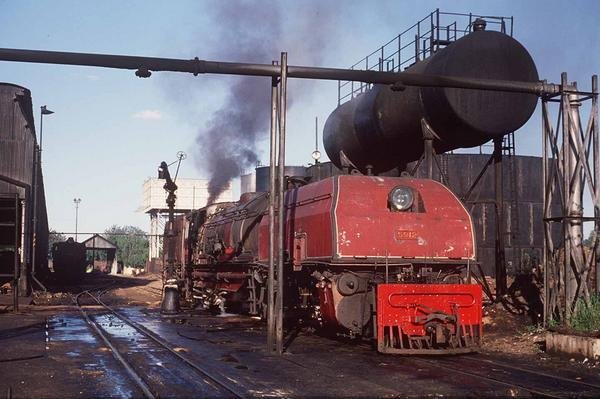 |
||
|
5912 Mount Oldeani on the fuelling road at Nairobi. PHOTO - James Waite |
||
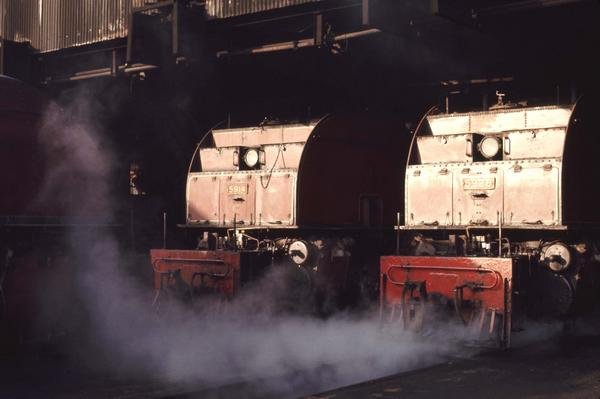 |
||
|
5928 Mount Mount Kilimanjaro reverses out of the shed past 5914 Mount Londiani. PHOTO - James Waite |
||
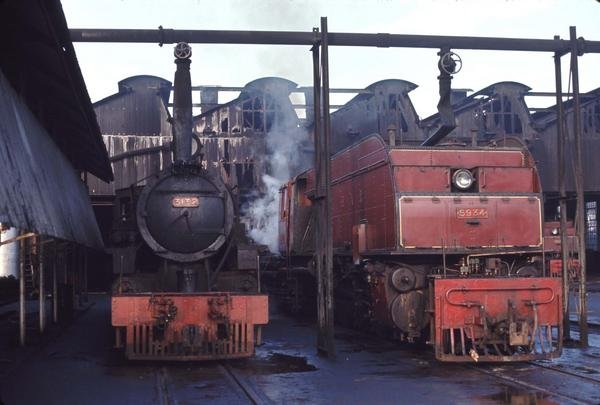 |
||
|
5934 Menengai Crater accompanies Tribal Class 3132 Kumam. PHOTO - James Waite |
||
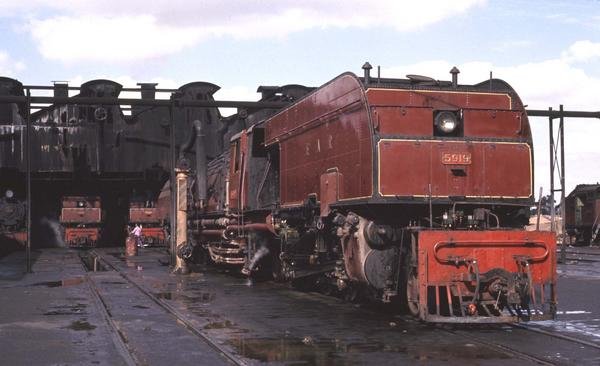 |
||
|
5919 Mount Lengai at Nairobi Shed. PHOTO - James Waite |
||
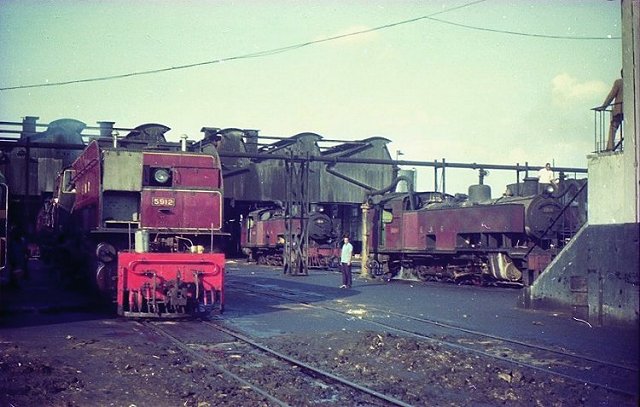 |
||
| Garratt 4-8-2+2-8-4 5912 Mount Oldeani is flanked by two unidentified 4-8-4T 13 Class tank engines. When supplied in 1953 the 13 Class were 4-8-2Ts and when the side tanks were later extended, the wheel arrangement was changed to 4-8-2 - PHOTO Anthony Potterton | ||
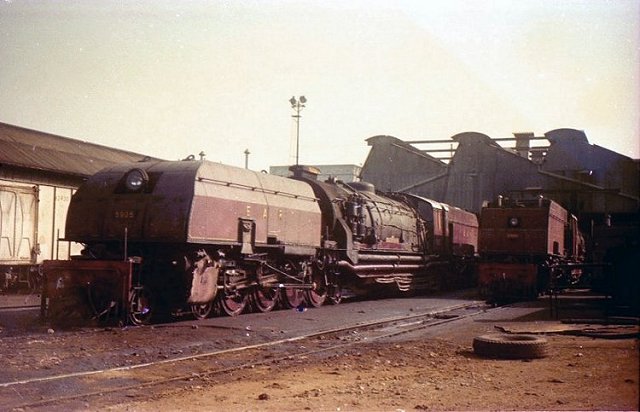 |
||
|
Two large 59 Class Garratts with 5905 Mount Muhavuru dominating this 1975 shot. - PHOTOs Anthony Potterton |
||
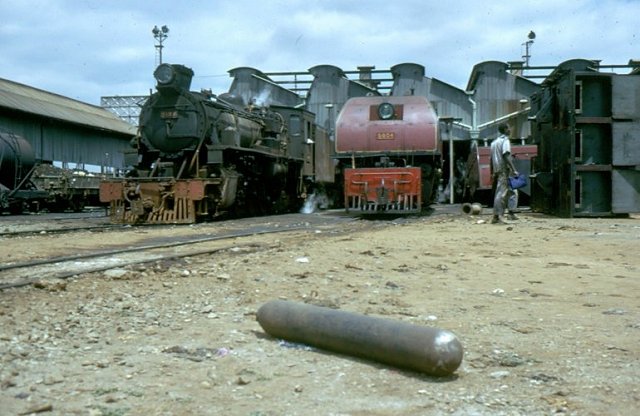 |
||
| 59 Class 5904 Mount Elgon (centre) on shed with 3144 Tharaka. The rear tank of another 59 Class has been grounded. - PHOTO - Anthony Potterton | ||
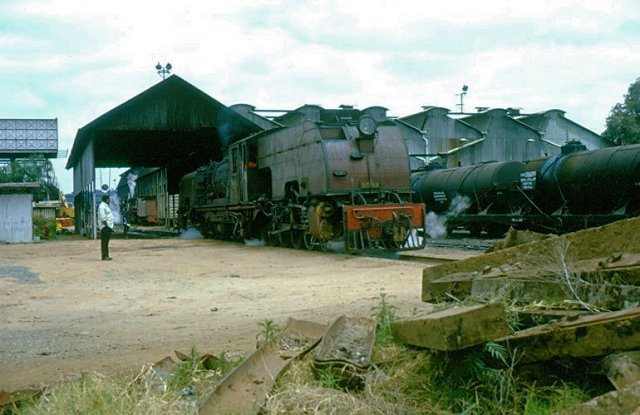 |
||
| 60 Class 6022, formerly named Sir Andrew Cohen who was governor of Uganda in the mid 1950s. PHOTOs Anthony Potterton. Before independence all 29 in the class introduced in the 1953-4, with the first twelve built by Société Franco-Belge at Raismes in France due to the British manufacturer having no capacity to accept the complete order. PHOTO Anthony Potterton | ||
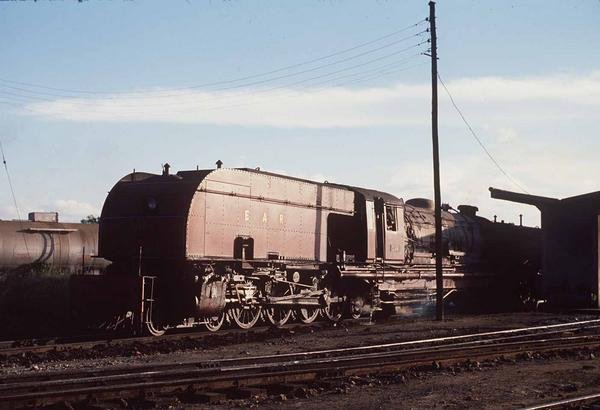 |
||
|
5921 Mount Nyiru at Nairobi. PHOTO - James Waite |
||
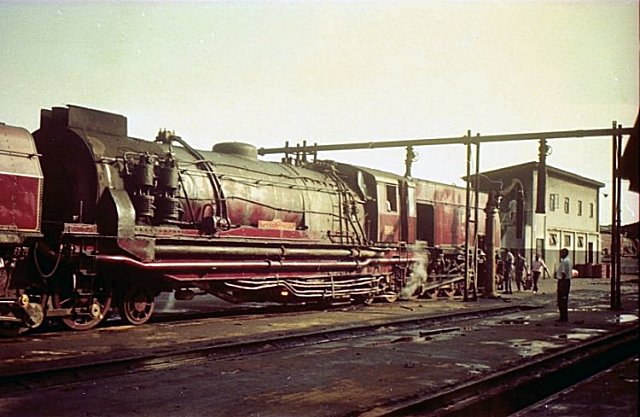 |
||
| 59 Class 5912 Mount Oldeani with its unique smoke deflectors - PHOTO Anthony Potterton | ||
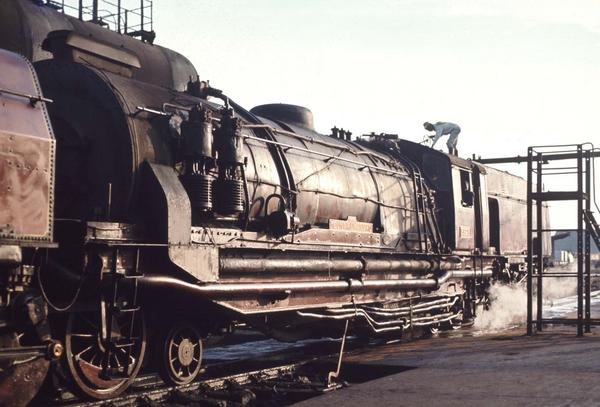 |
||
|
5928 Mount Kilimanjaro is readied for duty. PHOTO - James Waite |
||
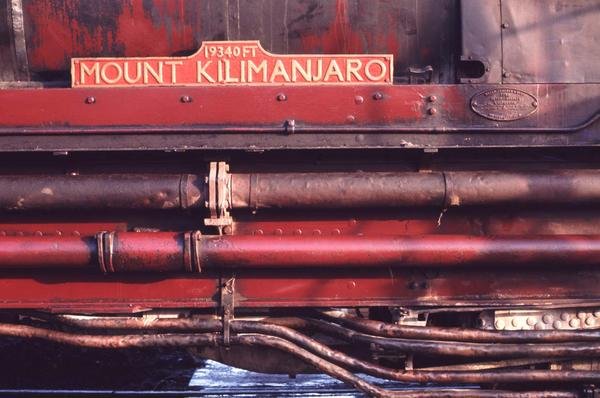 |
||
|
The highest mountain in Africa - but not the highest number in the 59 Class roster - that was reserved for irregularly named 5934 Menengai Crater. Almost all of the class had names beginning with "Mount". The other three irregulars were 5902 Ruwenzori Mountains, 5931 Ulguru Mountains and 5932 Ol'donyo Sabuk. - PHOTO James Waite |
||
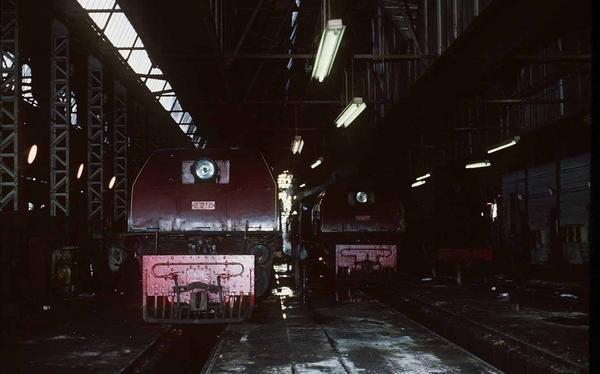 |
||
|
5912 Mount Oldeani and 5904 Mount Elgon inside Nairobi Shed in 1978. PHOTO - James Waite |
||
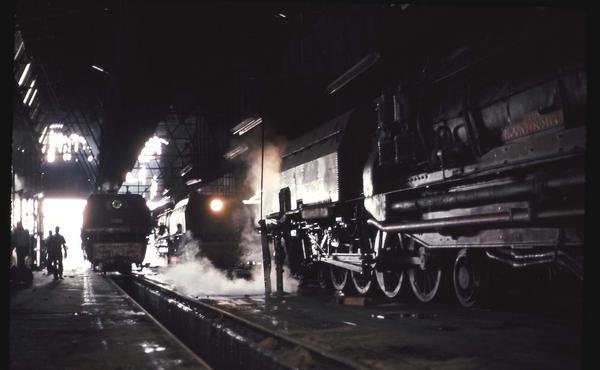 |
||
|
Three 59 Class garratts in Nairobi Shed. PHOTO - James Waite |
||
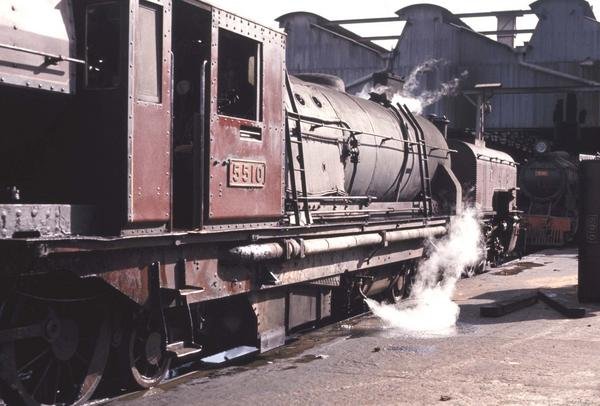 |
||
|
Unnamed ex-Burma railway 55 Class 5510. None of the five small 55s carried names. They were built in 1945 by Beyer Peacock but did not come to Kenya until 1955. PHOTO - James Waite |
||
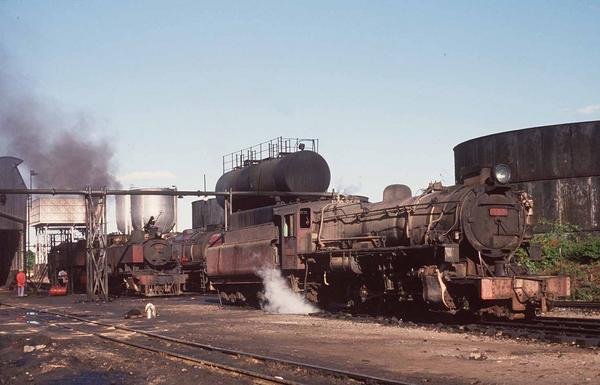 |
||
|
Tribal Class 2930 Tiriki ahead of two 13 Class tank engines and a 5912 Mount Oldeani on the re-fuelling roads. Mount Oldeani can be distinguished by its unique smoke deflectors. It also had an experitmental blastpipe arrangement. PHOTO - James Waite |
||
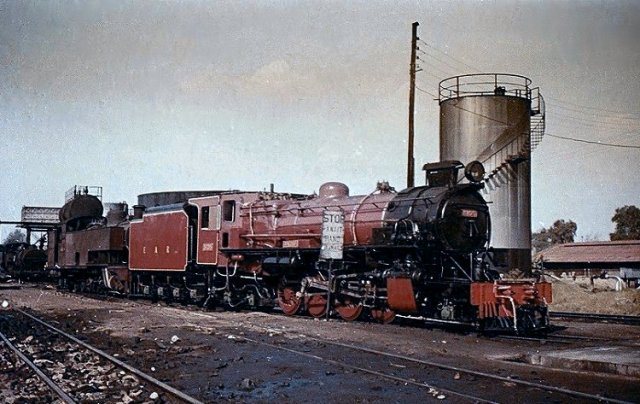 |
||
| 31 Class 3105 Bagisu has just been outshopped - PHOTO Anthony Potterton | ||
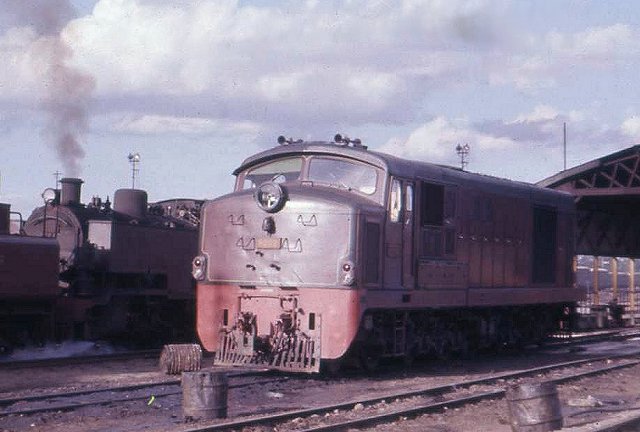 |
||
| 90 Class English Electric diesel 9007 accompanies a 13 Class 4-8-4T built by North British. Unfortunately the photo does not show the trailing bogie of the 13 Class tank. Although of the wheels were same diameter as on the front bogie, they were completely different in form due to the bogie [truck] having been taken from a 50 Class Garratt. - PHOTO Malcolm McCrow | ||
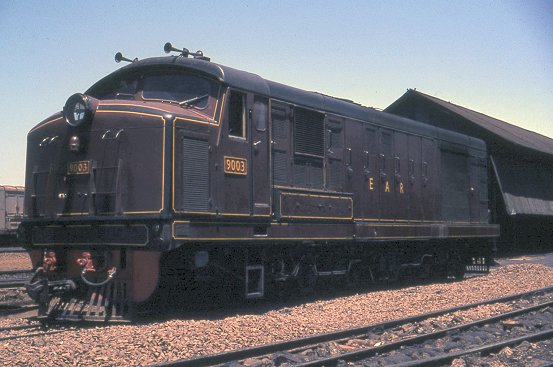 |
||
| 90 Class 9003 at Nairobi Steam Shed - PHOTO Kevin Patience | ||
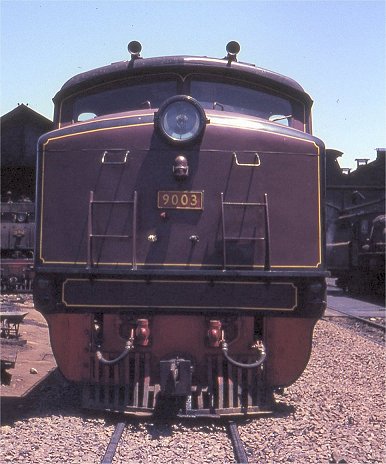 |
||
| 9003 with a 59 Class on the left and a 29 Class on the right. Later in life the 90 Class was to become EARC's 87 Class - PHOTO Kevin Patience | ||
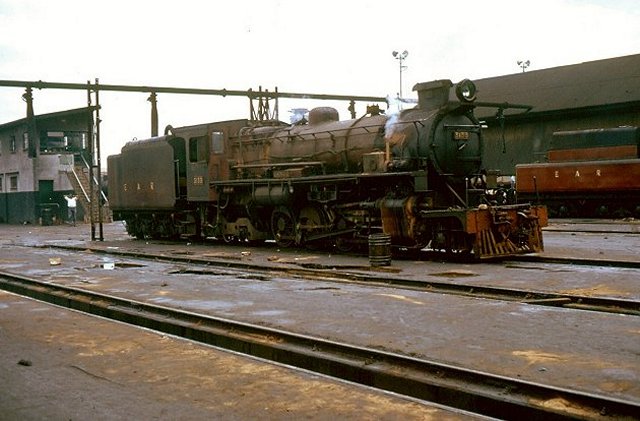 |
||
| A dirty Tribal 31 Class, 3133 Lango with a very clean 29 Class behind - PHOTO Anthony Potterton | ||
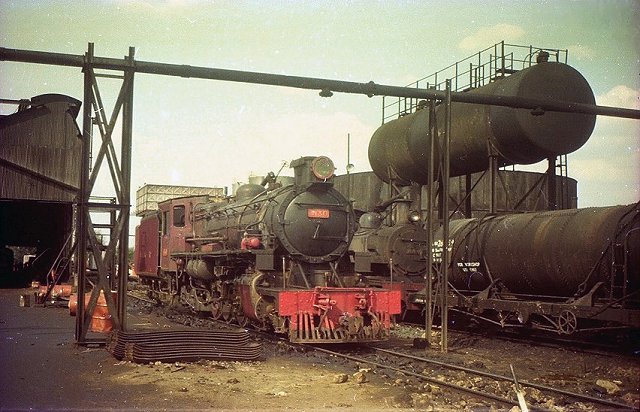 |
||
| 3130 Karamojong - PHOTO Anthony Potterton | ||
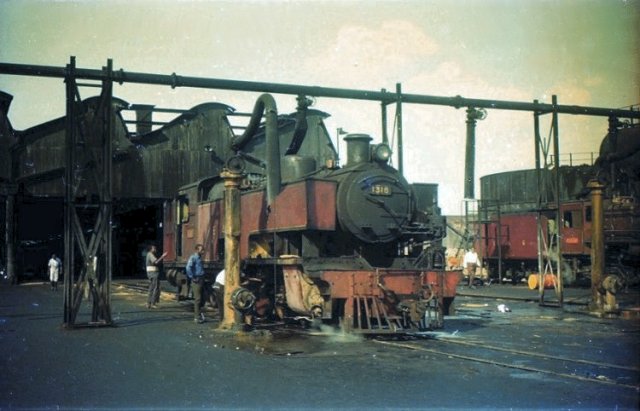 |
||
| 13 Class 1316 takes water - a 30 Class is in the background. When supplied in 1953 the 13 Class had a 4-8-2 wheel arrangement which was considered to be the main reason for the frequent derailments in sidings. Subsequently the locomotives were rebuilt to 4-8-4 wheel arrangement, the "new" trailing bogie being taken from redundant 50 Class Garratts. - PHOTO Anthony Potterton | ||
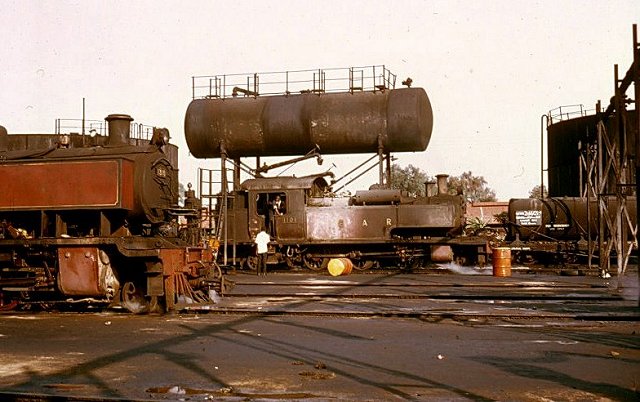 |
||
| 13 Class tank engine 1315 with 11 Class tank engine 1105 refuelling at Nairobi MPD - PHOTO Anthony Potterton | ||
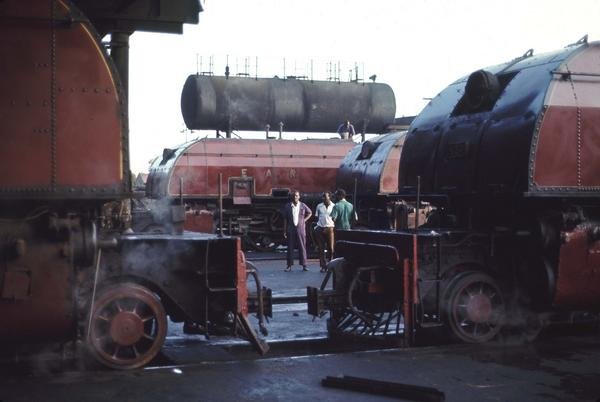 |
||
|
Four 59s below Nairobi's furnace fuel oil tank. PHOTOs - James Waite |
||
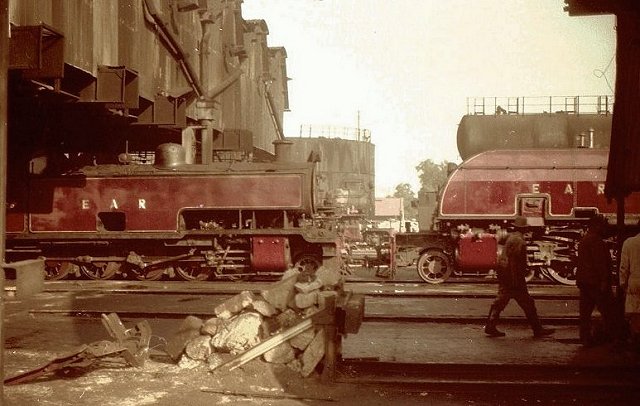 |
||
| A 13 Class tank engine with a 59 Class, left; freshly out-shopped unidentified 59 Class, right - PHOTO Anthony Potterton | ||
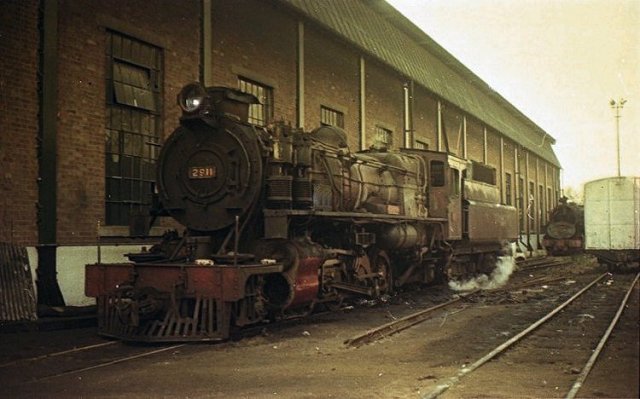 |
||
| 2-8-2 Tribal 29 Class 2911 Giriyama clearly in need of attention - PHOTO Anthony Potterton | ||
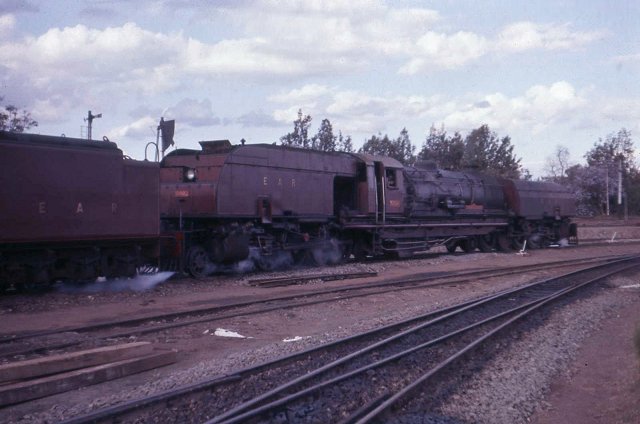 |
||
| 5902 Ruwenzori Mountains - one of the three "irregulars" in that the name did not start with "mount". The other two were 5931 Ulguru Mountains and 5932 Ol'donyo Sabuk - PHOTO Malcolm McCrow | ||
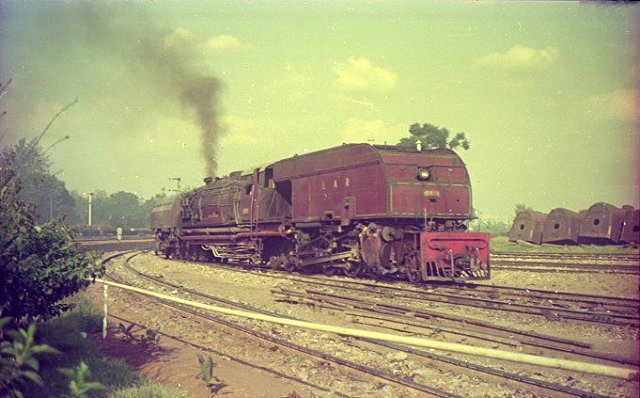 |
||
| 59 Class 5932 - Ol'donyo Sabuk heading out towards the main line to Mombasa and passed the remains of scrapped steam locomotives. PHOTO Anthony Potterton | ||
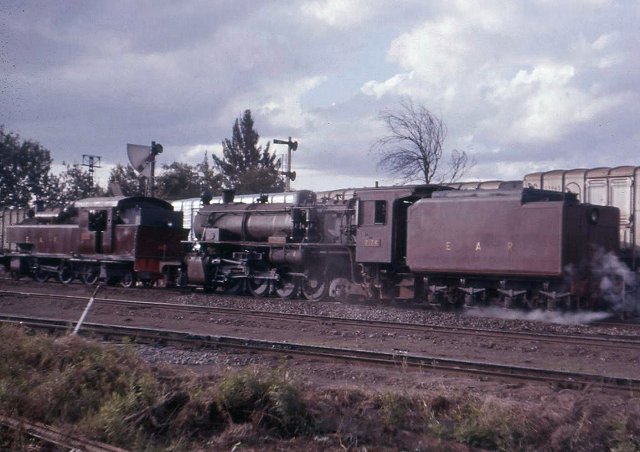 |
||
| Tribal 3134 Lugbara accompanies an 11 Class 2-6-2T tank engine - PHOTO Malcolm McCrow | ||
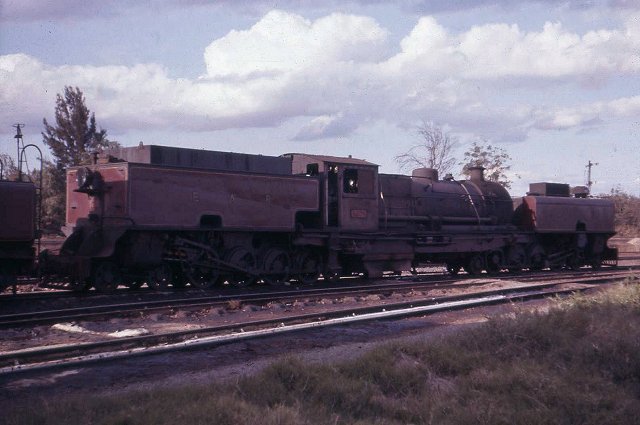 |
||
| 52 Class at Nairobi - PHOTO Malcolm McCrow | ||
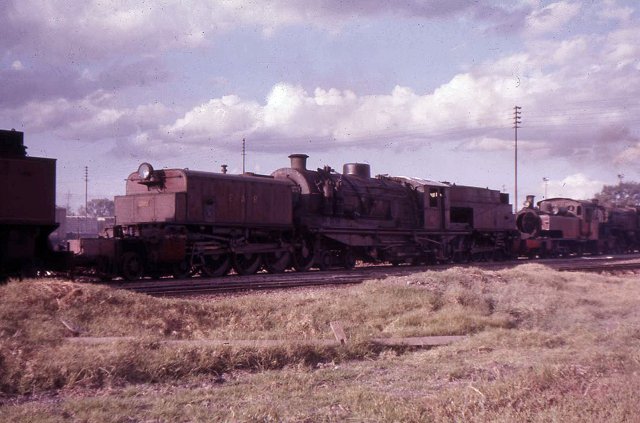 |
||
| A 57 or 58 Class at Nairobi, October 1962 - PHOTO Malcolm McCrow | ||
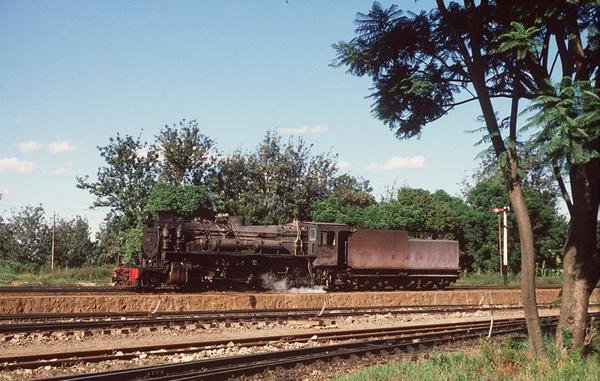 |
||
| An unkempt 30 Class 2-8-4 at Nairobi. The rundown of steam, as with British Railways, was accompanied by many dirty and uncared for locomotives. PHOTO - James Waite | ||
|
|
||
| Newly out-shopped 13 Class tank 1308 gets up steam - note the traditional green and white paintwork in the cab. Note the absence of the front bogie [truck]. - PHOTO - James Waite | ||
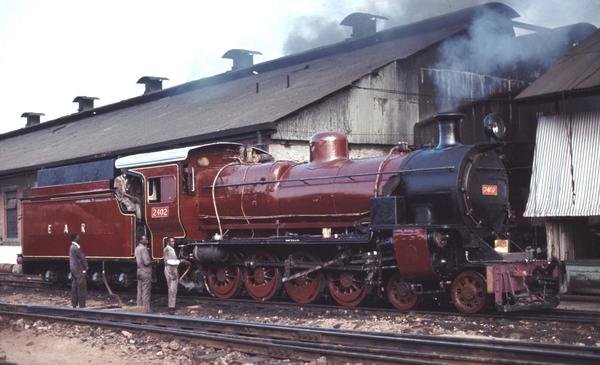 |
||
|
2402 gets up steam, although the painters have not quite finished with her. PHOTO - James Waite |
||
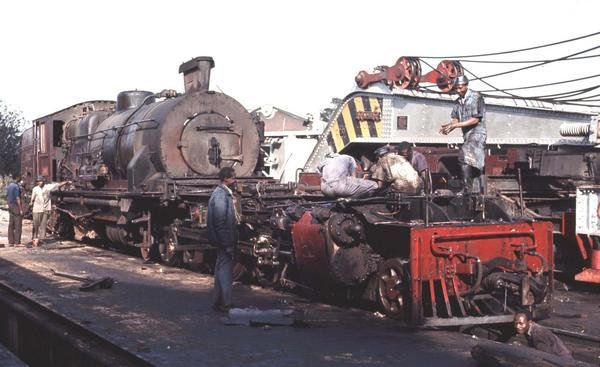 |
||
|
60 Class 6010 Sir Donald Cameron with its front tank removed to give access to the front engine. PHOTO - James Waite |
||
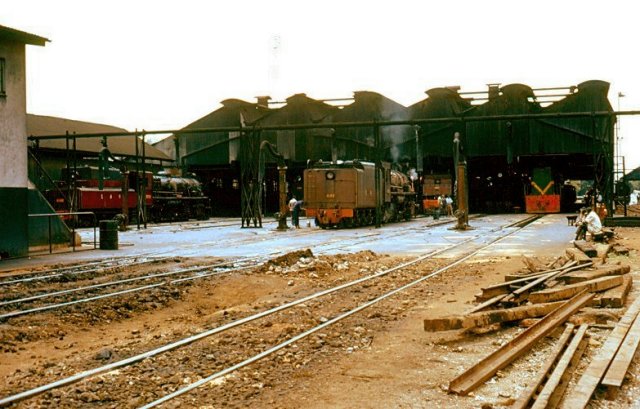 |
||
| From left to right - 29 Class, 31 Class, 59 Class and an EARC diesel - PHOTO Anthony Potterton | ||
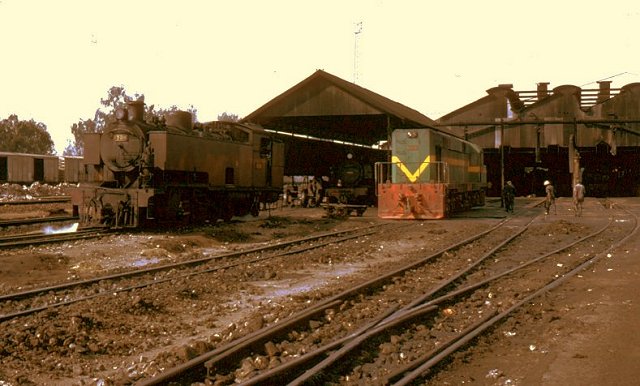 |
||
| 13 Class 1308 with a green liveried EARC diesel in 1975 - a 59 Class can just be seen in the shed. PHOTO Anthony Potterton | ||
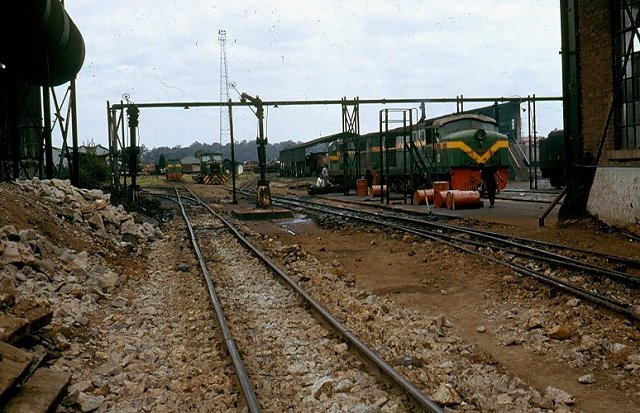 |
||
| An EARC 90 Class diesel locomotive accompanied by other diesels and a 31 Class. PHOTOs Anthony Potterton | ||
| East African Railways and Harbours | ||
